Pelvic Floor Dysfunction –Constipation
Pelvic Floor Dysfunction and Its Link to Constipation
Many moms quietly struggle with constipation long after giving birth, thinking it’s “just part of motherhood.” But Pelvic floor dysfunction & constipation are closely connected — and understanding that link can change everything.
When your Pelvic floor muscles don’t relax and coordinate properly, even a normal bowel movement can feel difficult or incomplete. The good news? You’re not stuck this way. With the right approach — including Pelvic floor therapy or guided at-home programs — you can retrain your body, relieve constipation, and restore healthy bowel function.
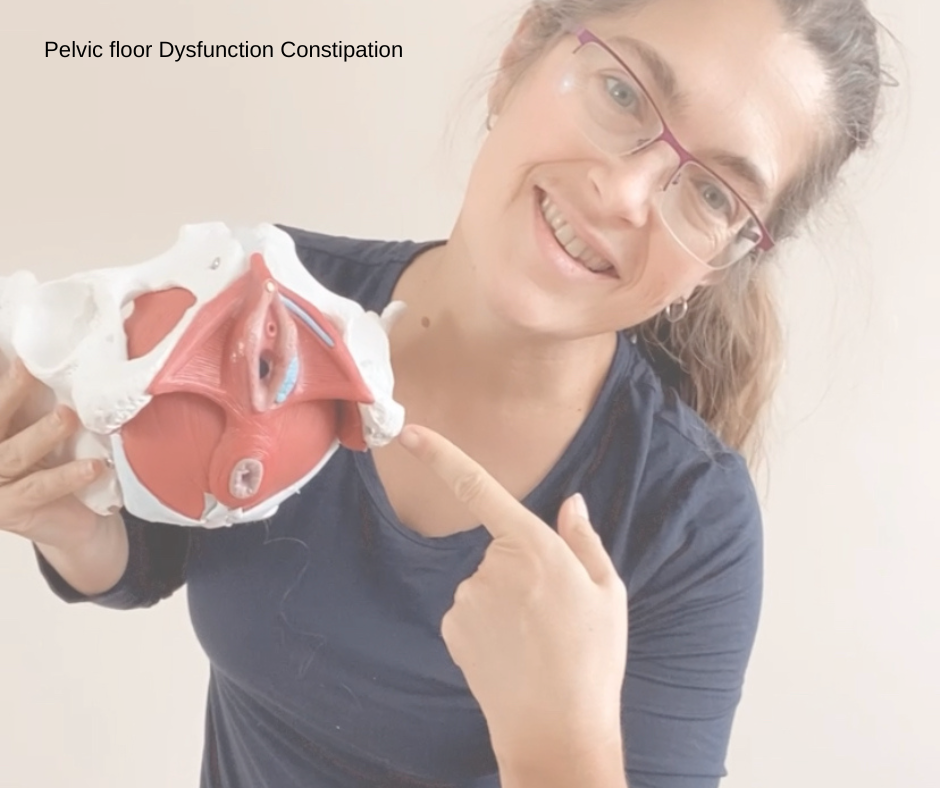
Understanding Constipation
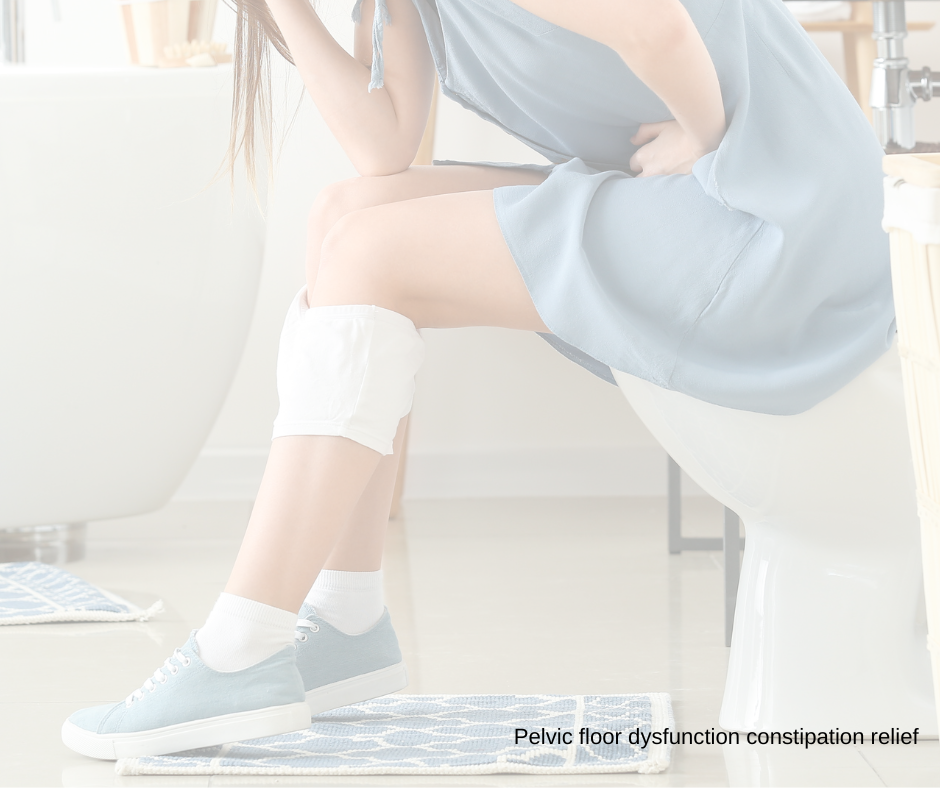
What Is Constipation?
Constipation happens when your bowel movements become infrequent, hard, or difficult to pass. You might go several days without being able to poop, or feel like you can’t fully empty your bowels.
Postpartum moms often experience constipation due to hormonal changes, weakened core muscles, or Pelvic floor tension — but that doesn’t mean it’s normal or permanent.
Symptoms of Constipation
Common symptoms of constipation include:
Straining to pass stool
Hard and dry poops or small pellets
A feeling of incomplete emptying
Rectal pain or pressure
Bloating or discomfort in the abdominal area
If this sounds familiar, it’s a sign your Pelvic floor muscles and digestive system might need some attention.
Chronic Constipation: Causes and Effects
Chronic constipation can lead to more than frustration — it can cause pain, hemorrhoids, anal fissures, or even pelvic organ prolapse from repeated straining.
Common causes include:
Ignoring the urge to poop
Not drinking plenty of water
Low-fiber diets
Stress and poor posture
Weak or tight pelvic muscles
Hormonal shifts after pregnancy
Over time, chronic constipation can lead to Pelvic floor dysfunction and difficulty with bowel function, creating a cycle that becomes worse without proper retraining.
Anatomy of the Pelvic Floor
Your Pelvic floor is a group of muscles and connective tissue that support your bladder, uterus, and rectum within the pelvic area. These muscles control urination, bowel movements, and stability in the pelvis.
Role of Pelvic Floor Muscles in Defecation
During defecation, your Pelvic floor should relax and lengthen to let stool pass smoothly through the rectum and anus.
If the muscles tighten or contract instead, stool can’t pass easily — forcing you to strain and making constipation worse.
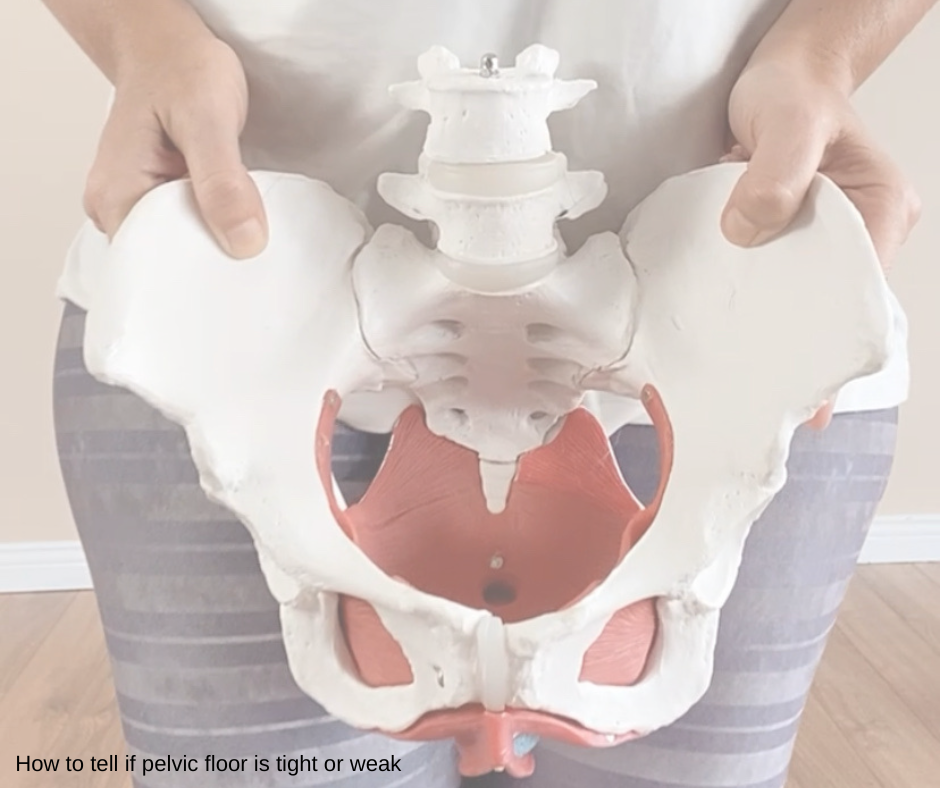
Diastasis recti is the separation of the abdominal muscles along the midline, creating a gap or bulge down the center of the stomach. This happens as the connective tissue that runs from the ribs to the pelvis stretches to accommodate a growing belly.
Connection Between Rib Flare and Diastasis recti
When your ribs flare, your core muscles stay in a lengthened position. The diaphragm and pelvic floor can’t coordinate properly, and that tension imbalance prevents healing.
Essentially, the rib flare is associated with Diastasis recti because both involve the same deep-core system losing alignment and pressure control. You can’t truly heal Diastasis recti without addressing rib flare — they work hand in hand.
If your rib flare is the result of pregnancy or poor breathing mechanics, working on breathing and alignment can dramatically improve both your core strength and Pelvic floor symptoms.
When Pelvic floor dysfunction develops, your muscles no longer coordinate properly during bowel movements. Instead of relaxing, they stay tense — making you strain harder and further tightening the muscles.
This cycle often leads to pain, pressure, and ongoing constipation.
Over time, it may even lead to pelvic organ issues like rectal prolapse.
The first step toward Pelvic floor dysfunction constipation relief is learning to release and retrain your muscles through breathing, posture, and gentle movement. This helps relieve constipation at the root rather than just treating symptoms.
Pelvic Floor Dysfunction Constipation Exercises
Before diving deeper, try this short Constipation Relief Workout video. It walks you through gentle movements that teach your body how to relax, release tension, and improve bowel flow naturally.
These Pelvic floor dysfunction constipation exercises focus on coordination — not force. Instead of pushing, you’ll learn to breathe and relax the Pelvic floor while gently engaging your deep core.
A physical therapist can help you identify which muscles are overactive or weak. Using biofeedback, they can teach you how to relax and coordinate properly during bowel movements.
They may also include abdominal massage, posture adjustments, and breathing drills to help improve your digestive system and bowel function.
If in-person therapy isn’t an option, my Pelvic Floor Release and Relax program is perfect for releasing muscle tension and restoring healthy movement patterns.
For a full, guided plan to restore strength and function, Pelvic Floor Freedom offers comprehensive support to address Pelvic floor dysfunction at home.
Pelvic Floor Dysfunction Treatment at Home
When seeing a therapist isn’t possible, you can still make incredible progress.
Effective pelvic floor dysfunction treatment at home involves:
Releasing tension in the pelvic muscles
Learning to breathe without bracing your core
Strengthening through gentle muscle contractions
Improving posture and alignment
Supporting your body with proper nutrition and hydration
My Pelvic Floor Release and Relax program focuses on muscle release and flexibility — ideal for a tight pelvic floor.
Once you’ve built that foundation, the Pelvic Floor Freedom program continues your recovery, strengthening and stabilizing the core to keep your bowel movements regular and pain-free.
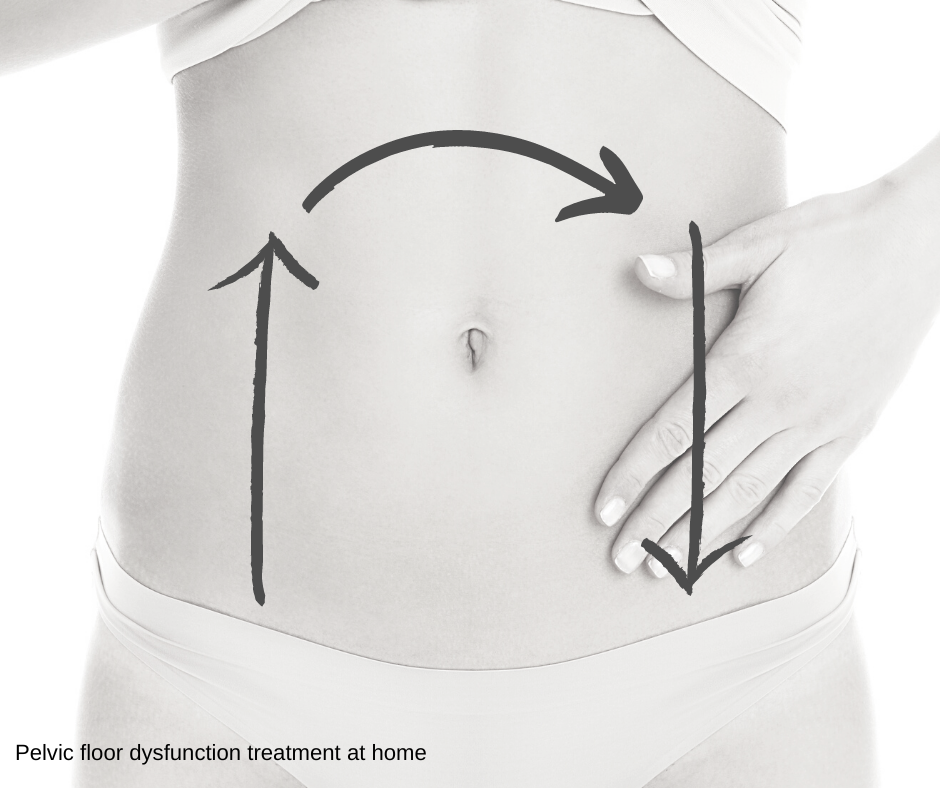
Diet and Exercise to Prevent Constipation
Your digestive tract thrives on consistency and care.
Here are key ways to prevent constipation naturally:
Increase fiber: Include high-fiber foods and whole grains to soften stool.
Stay hydrated: Drink plenty of water daily to keep stool from becoming hard and dry.
Move regularly: Regular exercise supports intestinal motility and overall digestion.
Abdominal massage: Stimulates the digestive and gastrointestinal systems, helping to empty your bowels more easily.
Lifestyle changes like these can help your body’s natural rhythms and help you poop more comfortably — without straining or discomfort.
When to Seek Help for Pelvic Floor Dysfunction
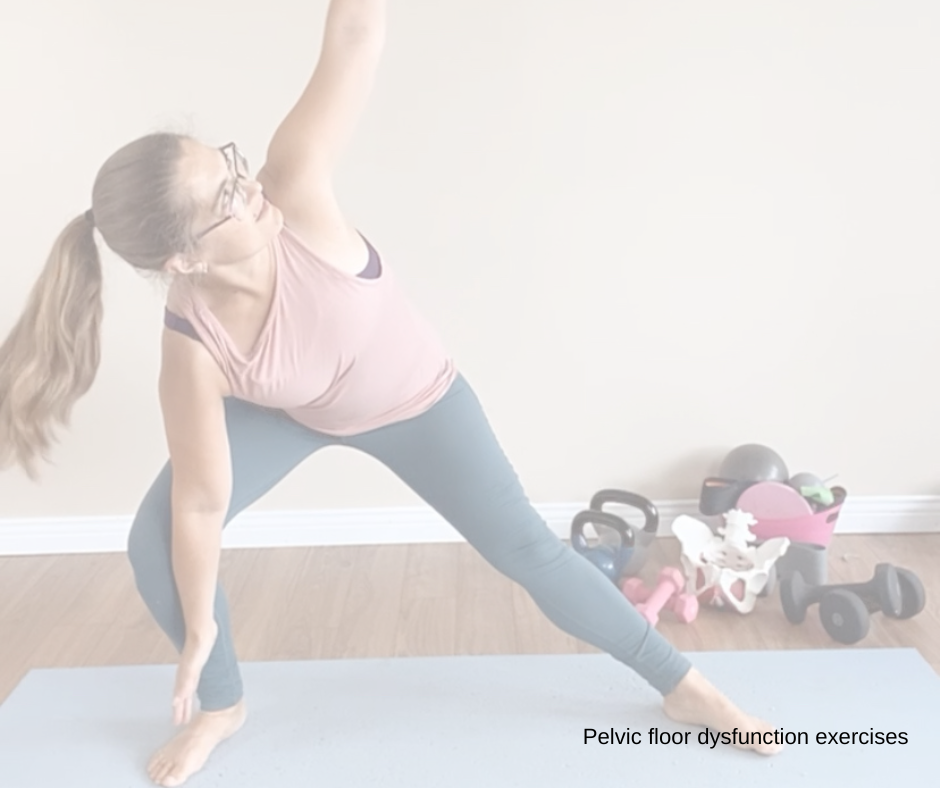
If your constipation continues despite lifestyle changes — or if you experience:
- rectal pain,
- blood in stool,
- leakage,
- or a feeling you can’t empty completely
It’s time to reach out to your healthcare provider.
Providers often recommend Pelvic floor therapy, biofeedback, or guided home programs to restore muscle balance and improve elimination patterns. Ignoring these certain symptoms can allow issues to become worse, so early action is always best.
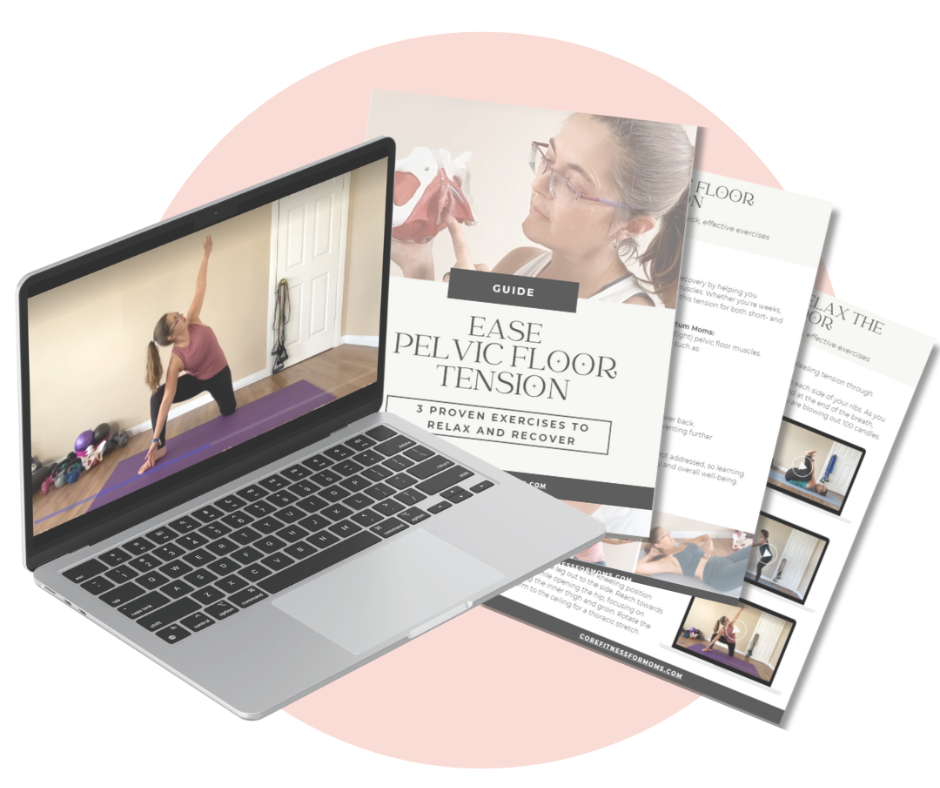
Constipation and pelvic floor dysfunction often go hand in hand — but your body can relearn how to relax, coordinate, and function properly again.
Whether through therapy, guided programs, or simple at-home changes, lasting relief is possible.
If tightness or tension is keeping you constipated, start with the Pelvic Floor Release and Relax program to gently release and restore flexibility.
For a full solution that rebuilds strength and confidence, Pelvic Floor Freedom will help you reclaim healthy movement, posture, and bowel function — so you can feel truly at ease in your body again.
The post Pelvic Floor Dysfunction Constipation appeared first on Core Fitness for Moms.

Comments
Post a Comment